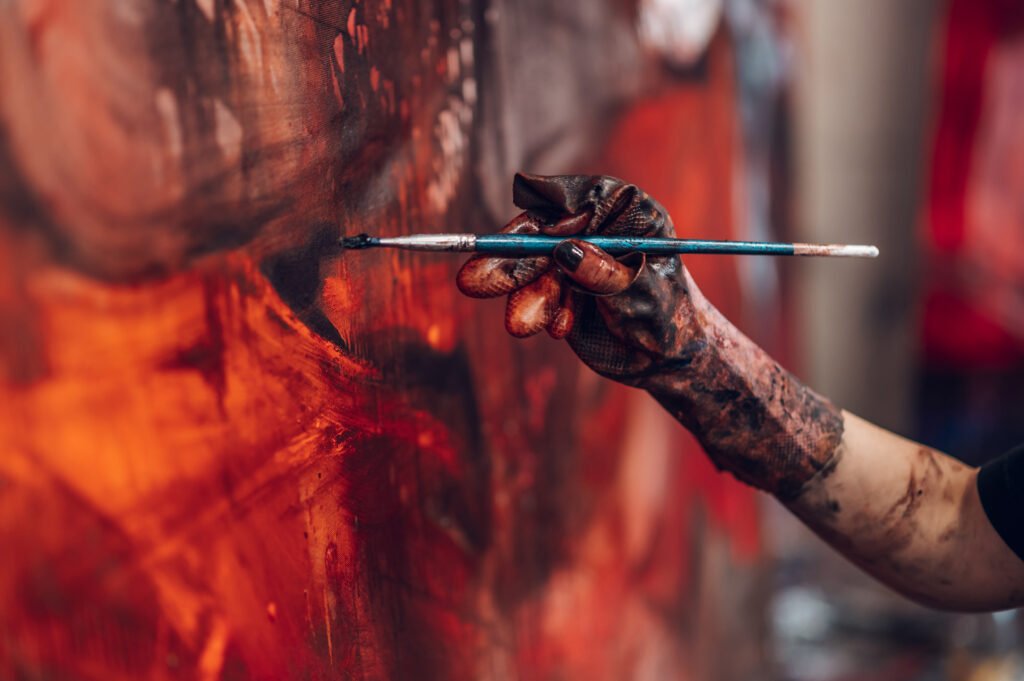Contemporary art did not emerge suddenly. It was the result of profound transformations that took place worldwide after World War II.
The trauma left by the conflict, the rebuilding of societies, and the rise of new cultural powers directly influenced artistic production.
As a consequence, new languages began to emerge, moving away from classical references and making space for questioning, experimentation, and more intense political discourse.
Although many influences were already present in modern art, the post-war period marked the beginning of a new era. Artistic movements of this time broke with traditional notions of form, technique, and authorship.
Artists started seeking ways to express the chaos, anguish, and uncertainty of the contemporary world, using art as a field of resistance, reflection, and creative freedom. This process shaped what we today understand as contemporary art.
The Transition from Modern Art to Contemporary Art
Modern art, which dominated the first half of the 20th century, introduced fundamental innovations such as abandoning traditional perspective and valuing the artist’s subjectivity. Movements like Expressionism, Cubism, Futurism, and Surrealism had already proposed major breaks with the past. However, despite these innovations, many modern artists still believed in the idea of aesthetic progress and in building styles with their own identity.
From the end of World War II onward, this belief began to unravel. In the United States, for example, Abstract Expressionism became one of the first manifestations signaling a new sensibility. Artists like Jackson Pollock and Mark Rothko explored gesture, spirituality, and emptiness as central elements. Painting ceased to be merely an image and became a field of action.
Shortly thereafter, other artistic movements arose in opposition to the emotional gesture of Expressionism. Minimalism, for example, proposed the maximum reduction of forms, with works emphasizing repetition, neutrality, and objectivity. Conceptual art placed the idea above the material execution of the work. Artists such as Sol LeWitt and Joseph Kosuth argued that the concept alone sufficed, even without a traditional art object.
Another important milestone was the emergence of Pop Art, which appropriated elements from mass culture such as packaging, advertisements, and celebrities. Andy Warhol, Roy Lichtenstein, and others brought consumption, repetition, and image superficiality into art. Critique of the system and the cultural industry became a constant feature of contemporary production.
Post-War Artistic Movements and Their Contributions to Contemporary Art
Among the artistic movements that consolidated contemporary art, Land Art stands out. It used natural environments themselves as support for artistic creation. Giant works made in deserts or mountains proposed new relationships with space and time.
At the same time, artists began developing performances and happenings. They made the body, presence, and ephemerality essential parts of the work.

These practices brought art closer to everyday life. Performance, for instance, broke with the idea of permanence and demanded a new kind of interaction with the audience. Marina Abramović became prominent in this field by proposing actions that test the physical and emotional limits of both artist and viewer. The artwork ceased to be something to observe and became something to experience.
On the political front, feminist art, Black art, and productions from Latin America, Africa, and Asia started gaining space, questioning the centrality of the European male gaze in artistic narratives. These movements expanded the themes addressed, placing discussions about gender, identity, colonization, and social inequality at the center. Diversity became a hallmark of contemporary art.
Finally, the technological explosion also strongly impacted artistic production. Digital art, the use of the internet as an exhibition space, and works with artificial intelligence are natural extensions of the process begun in the post-war era. The multiplicity of current media and discourses finds its roots in movements that challenged the traditional limits of modern art.
Thus, the legacy of post-war artistic movements remains alive, influencing creation and critical thought in contemporary art. They paved the way for art that is freer, more questioning, and deeply connected to the transformations of the world.



